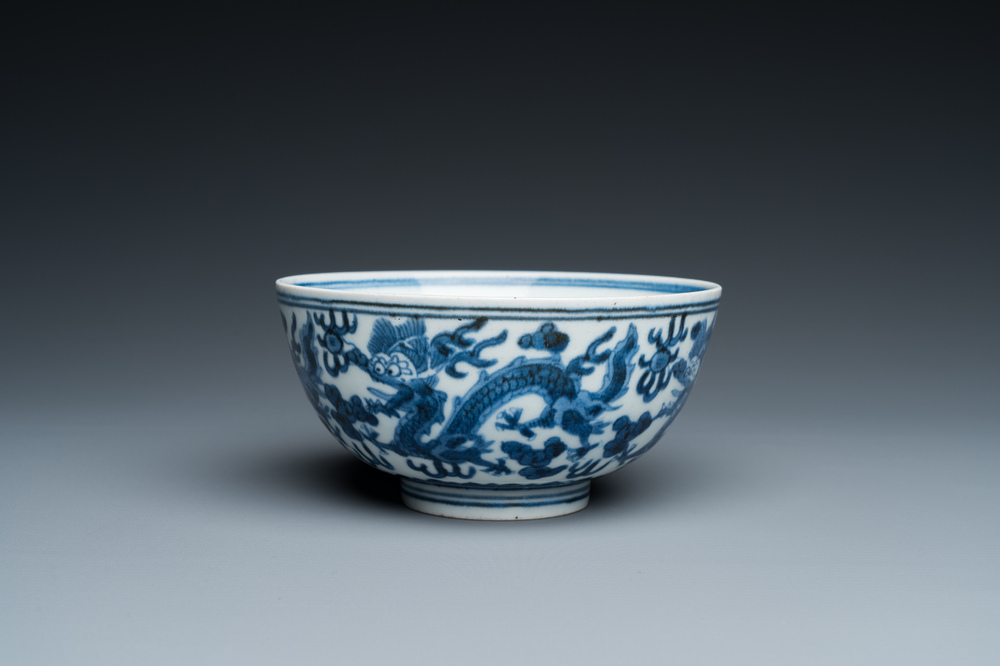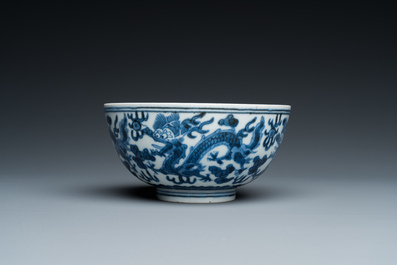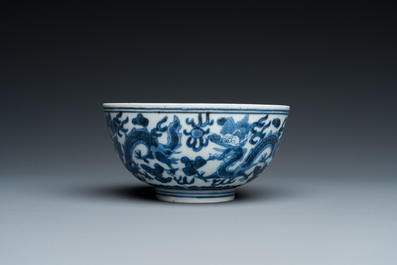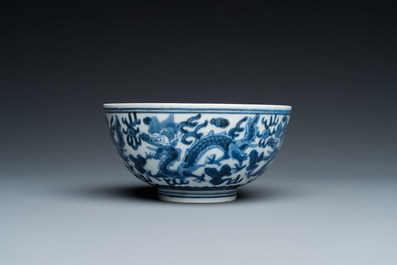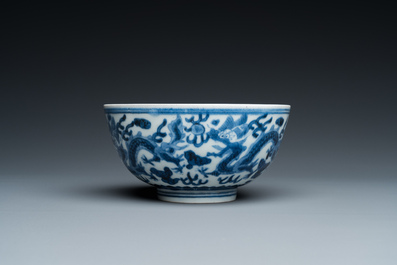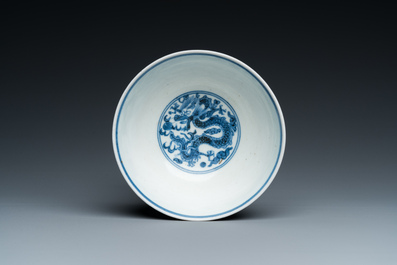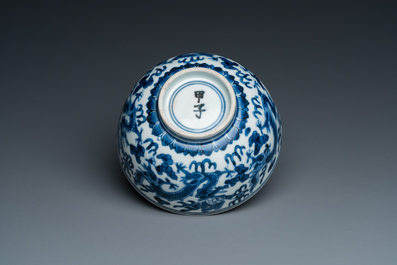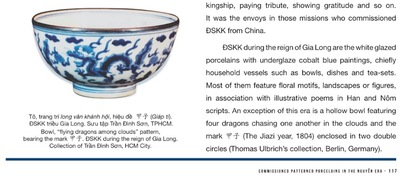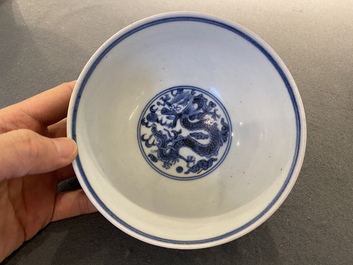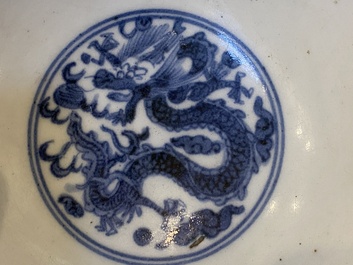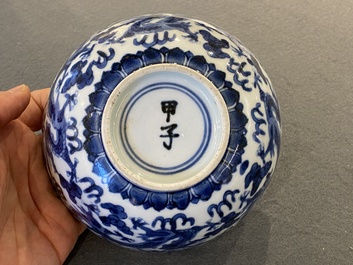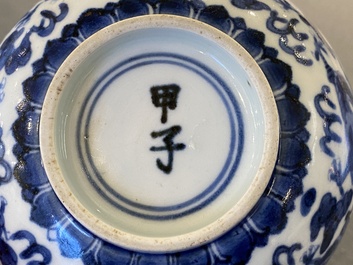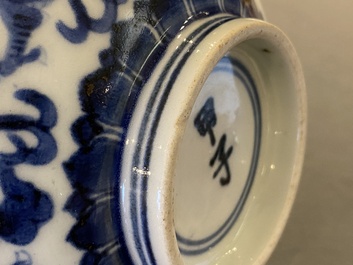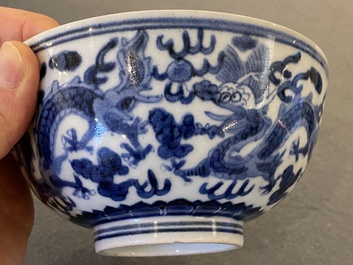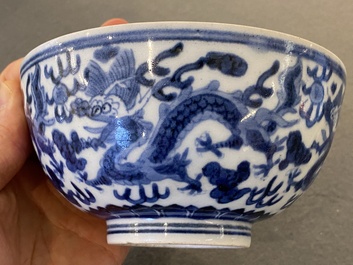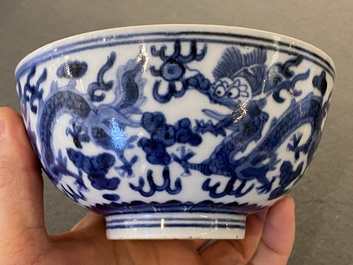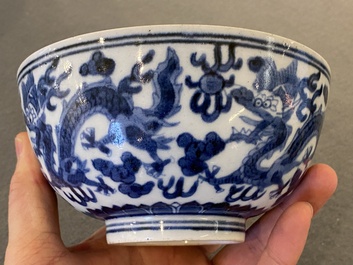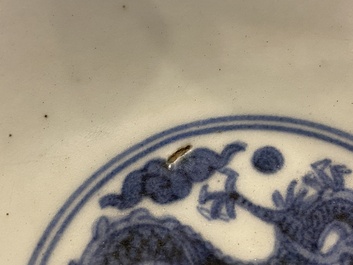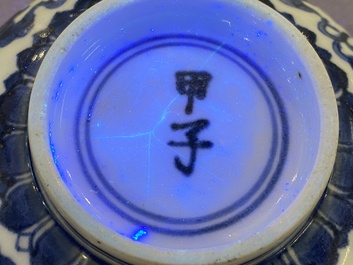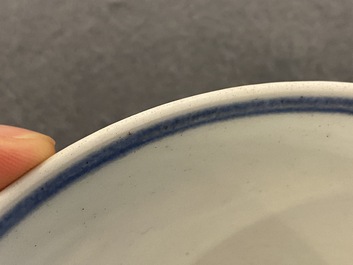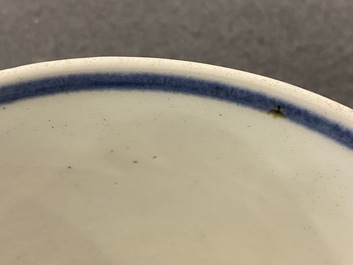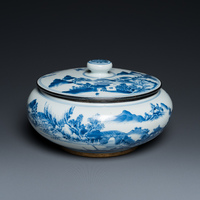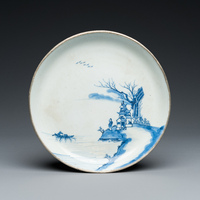We moeten verifiëren dat uw registratie niet om een geautomatiseerde ingave in ons systeem gaat. Vervolledig aub de onderstaande test...
Een Chinese blauw-witte 'Bleu de Hue' kom voor de Vietnamese markt, Giáp Tí merk, ca. 1804
Dia.: 13,7 cm - H.: 7 cm
This bowl was not for trade, but is a historical commemorative souvenir bowl created during the most important mission to China on establishing the new Dynasty of Nguyen under first king Gia Long in 1804. Commissioned in a very small number during the two missions in that year with the function of personal souvenir token for the leader and members of the ambassade.
Provenance:
- The collection of Dr. Claus Vollers, German ambassador in Vietnam, 1981-84.
- The collection of Thomas Ulbrich, Studio Tho, Hanoi-Berlin, acquired from the above.
Condition: (UV-checked)
- Some superficial wear to the glaze.
- The rim is slightly polished.
- A minor superficial chip of ca. 3 mm to the foot rim.
- A star-shaped hairline of ca. 5 cm to the base.
品相報告:(已用紫外線光檢查)
- 碗的釉面正面磨損痕跡。
- 輕微磨口。
- 底足一個約3毫米的小飛皮。
- 炸底約5釐米。
Ref.:
- Đồ sứ ký kiểu thời Nguyễn (Commissioned Patterned Porcelains In the Nguyễn Era), p. 117, where it is stated that only two of these specific dragon bowl seem to exist, of which only one is outside Vietnam (which is this bowl). (see added image)
- Only very few pieces with this year mark are recorded, for example: Đồ sứ ký kiểu đời Gia Long. Museum Huế (link) and one with Giáp Tý mark in the collection of Vương Hồng Sển (museum in Saigon) (link)
- Tự Vị tiếng nói miền Nam (Dictionary of the Southern Language) by Vương Hồng Sển, Nhà Xuất bản Trẻ (Youth Publishing House), Hochiminh City, 1998 pp: 411-412, where it is stated (translated):
Lê Quang Định (1760 - 1815), birth name Tri Chỉ, penname Tấn Trai, from Phú Vang province (Thừa Thiên), went to the South (of Vietnam, today HCM/ Saigon) to study with Võ Trường Toản, befriended with Ngô Thanh Tịnh and Trịnh Hoài Đức who all three were known as the Gia Định's Trio;
He followed Lord Nguyễn Ánh (by later dynastic name GIA LONG ) and achieved many feats, gained many positions and titles, leaded a delegation with participation of Lê Chánh Lộ , Lê Gia Cát to Qing-dynasty China. (Source according to Lê Thọ Xuân in the Year Book of the Association for Study Promotion in 1942).
Following this first official delegation to China (1803) was a second delegation soon after and lead by 'diplomatic' envoy Trịnh Hoài Đức in year Giáp Tý (1804). In return to these two diplomatic envoy delegations from Vietnam, the Guangxi's Surveillance Commissioner Tề Bố Sâm (齊 布 森), who carried out diplomatic duties for the Qing government under emperor Jiaqing (顒琰), bestowed the Vietnamese requested investiture for Lord Nguyễn Ánh by an official document (Sắc phong, chin.: 册封) which was accompanied by a present - a tea set with the mark Giáp Tý / Niên Chế.
- Interpretation by Mr. Ulbrich: The porcelain group of bowls and teasets with the base mark Giáp Tí 甲子 1804) were ordered to be manufactured by the Chinese mandarin Tề Bố Sâm, chin. 齐布森 , who was in charge of the foreign supervision and diplomatic exchanges with the southern border neighbours. The Vietnamese delegation mandarins had been sent to China and requested officially, to acknowledge the new Vietnamese leader-in-power, Nguyễn Phúc Ánh (阮福暎) , as new king of their country. Two delegations were sent from Vietnam, and the Chinese side finally came to the conclusion, to bestow the new Vietnamese ruler with the title of 'king of Vietnam', not with title 'emperor' - equal to the Chinese emperors title - as requested by the Vietnamese side. The porcelain selected or ordered by the Chinese side along with the installment document, is considered as a kind of present to the new vietnamese 'king'.
The date mark Giáp Tí 甲子 commemorates this political event - the founding year of the newly established Nguyen dynasty and the proclamation of its first ruler Nguyễn Ánh (阮映) , who took the dynastic name 'Gia Long' after proclamation and enthronement. The specific design ordered and manufactured by the Chinese side as a diplomatic gift for the Vietnamese, represents and expresses the diplomatic controversy of the new Vietnamese ruler's title 'emperor' or 'king': A dragon with four claws.
